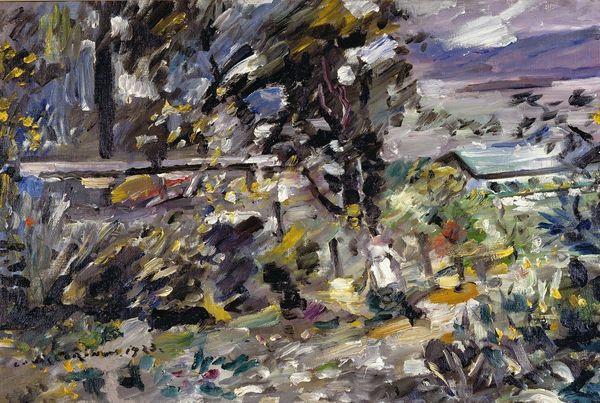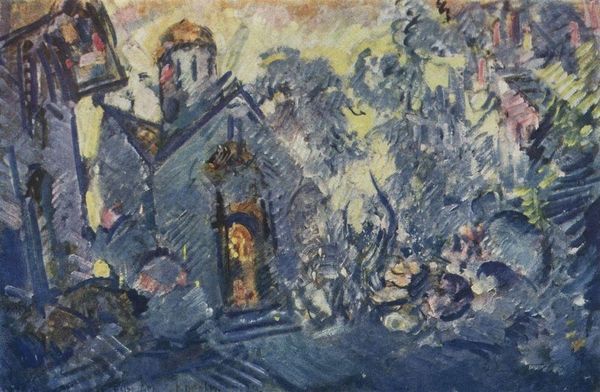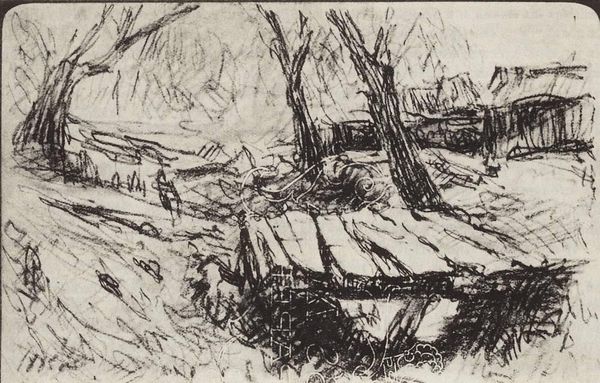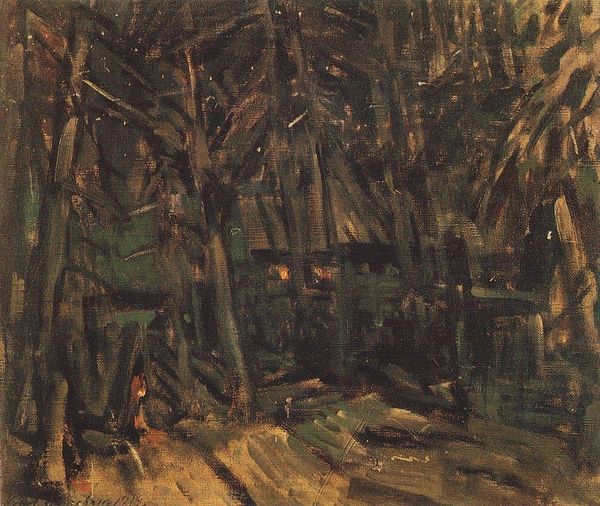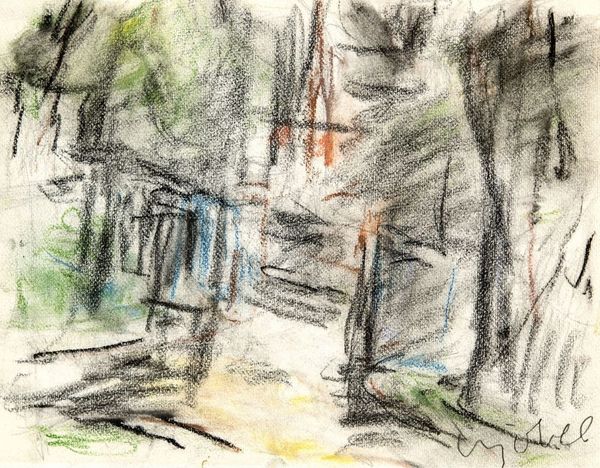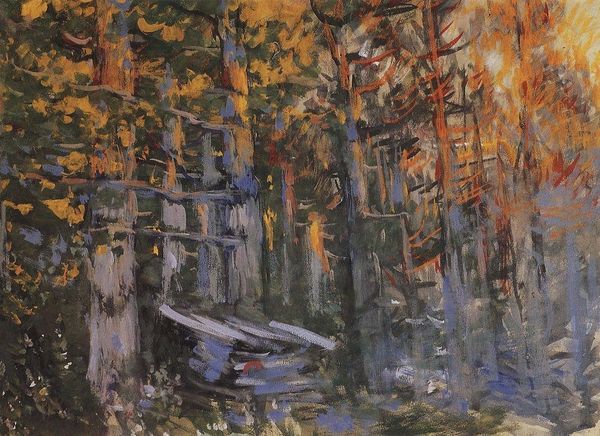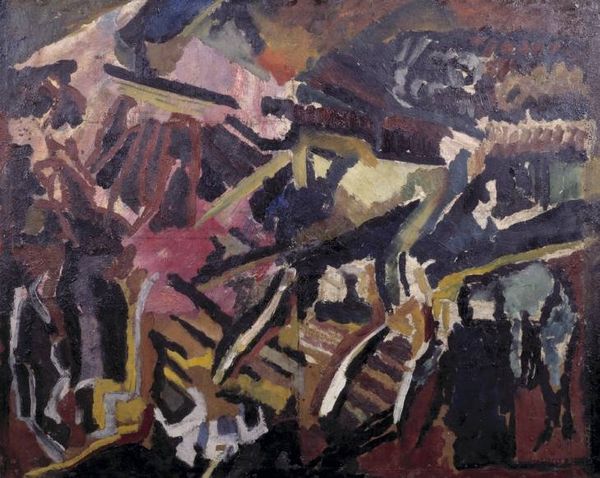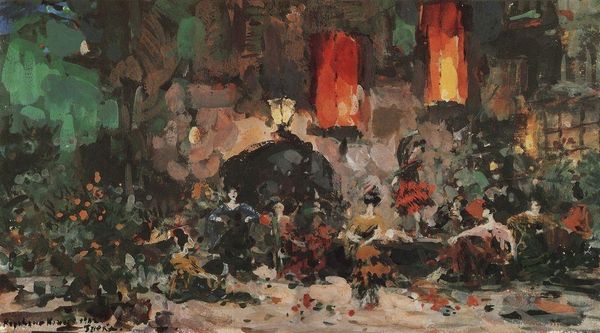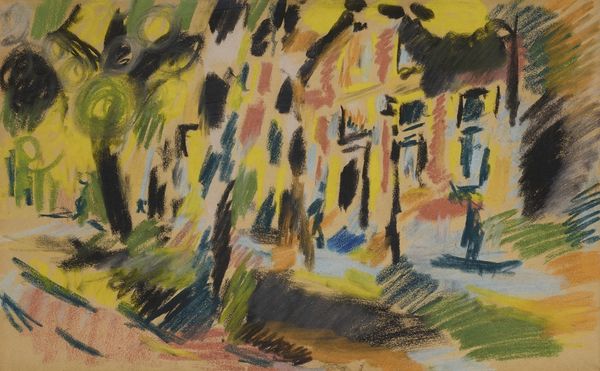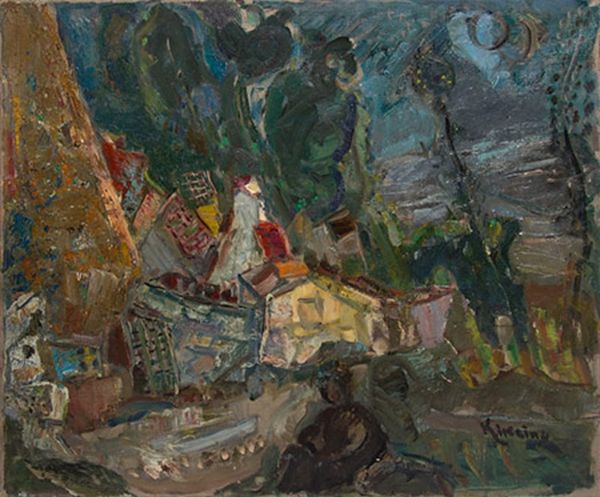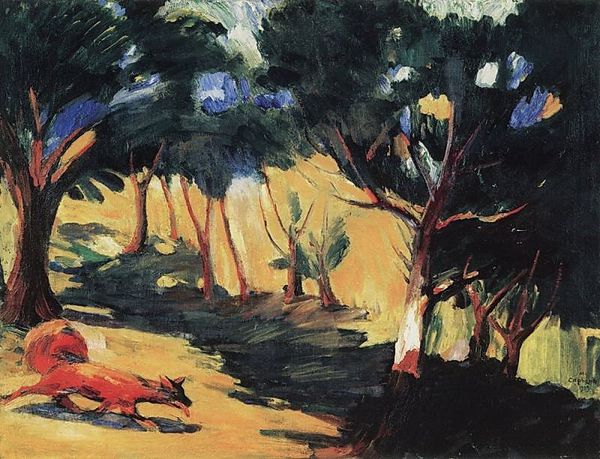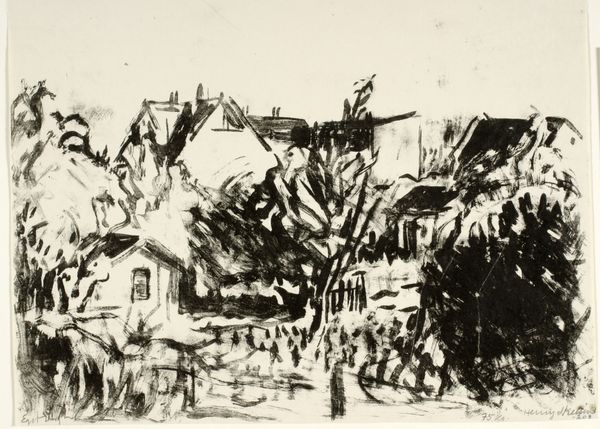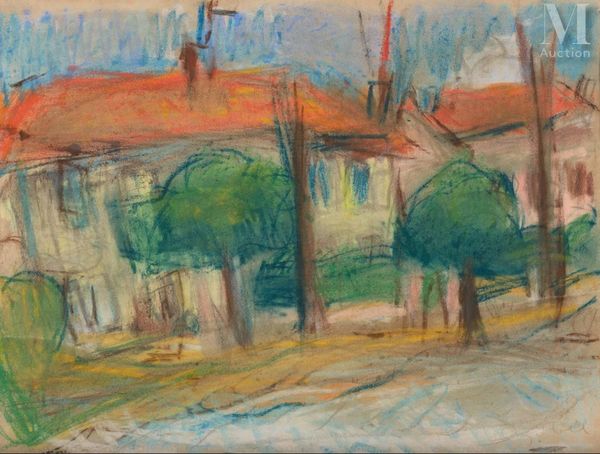
Copyright: Public domain
Editor: Konstantin Korovin's "Posad Berendeys," painted in 1914 using oil paint, strikes me as both beautiful and a little melancholic. There's a sense of a hidden world within this landscape. How do you interpret this work? Curator: This work certainly vibrates with symbolic meaning, doesn't it? Think of "Posad Berendeys" not just as a location but as a potential evocation of the lost, fantastical worlds found in Russian folklore and operas, often filled with symbolic figures and dwellings. Korovin seems less interested in precisely depicting reality, and more concerned with conjuring a memory or feeling, perhaps even anxieties, linked to Russia’s relationship with its past. The quick, almost chaotic brushstrokes contribute to the sense of fleeting time, of something dissolving even as we look at it. What emotions do these choices stir in you? Editor: I definitely see the anxiety, especially in the almost frantic brushwork and the way the buildings seem to blend with the forest. The heavy darkness also adds to a somber tone. Do you think Korovin was making a statement about the changing Russia of his time? Curator: Absolutely. Consider the historical context: 1914. On the cusp of monumental change. The old world, represented by the wooden houses and implied folklore, is being engulfed by something new and potentially destructive, visualized perhaps by the darkness encroaching. Do you notice how the light struggles to penetrate, creating these little sparks of color that almost fight against the dominant gloom? Editor: Yes, now that you mention it, there are defiant sparks of color that refuse to be overtaken by darkness! I had not quite seen it like that. Curator: It's as if Korovin is capturing the moment when one era transitions into another, holding onto cultural memory in the face of overwhelming forces. What does that cultural tug-of-war communicate to you as a contemporary viewer? Editor: It reminds me that art can capture not just how things look, but how it *feels* when things change – how individuals and cultures grapple with huge shifts in their histories. Curator: Precisely. And isn’t that the enduring power of imagery and symbols, to encapsulate and transmit complex cultural experiences across time?
Comments
Join the conversation
Join millions of artists and users on Artera today and experience the ultimate creative platform.
